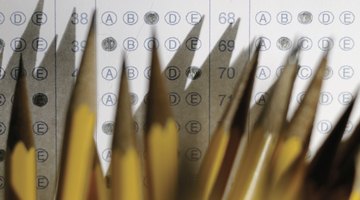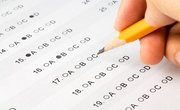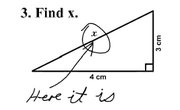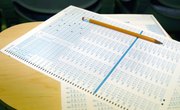State testing accountability places demands on teachers and schools. A study by the National Center for Fair and Open Testing found that states use tests to determine accountability and rely on scores to decide whether teachers and schools should be sanctioned or rewarded. Some schools motivate students by offering rewards for passing exams, while others work to motivate students by focusing on personal motivation to achieve other goals and success in school.
Accountability Drives Incentives
As the pressure of accountability for exam scores increases, schools cannot afford to rely on students to be self motivated to pass exams. Administrators are now looking to incentives from external sources as assurances to increase student motivation. The study "The Power and Pitfalls of Education Incentives" defines two types of incentives: input- and output-based incentives. The study found that incentive programs that reward academic output (rewarding high test scores) do not have a significant impact on student performance. However, input-based incentives, such as paying students for the quantity of books read during the summer or for competing in math competitions during the year could have a greater impact on test scores because it builds proficiency in reading and math and helps students in the long run.
External Rewards
Educators may see small results from reward programs, but they are continuing to use them because poor passing rates may bring sanctions and may damage the school's reputation. School administrators reward students with external rewards by providing money raffles, cash giveaways, electronic gadgets and gift cards for passing exams. Although external rewards may not be as effective as intrinsic motivation, principals do continue to use these incentives as a means to raise student test scores. Rudy Mendoza, principal of Gardena High school in Gardena, Calif. finds that scores jumped higher than any other year after instituting a gift card incentive program.
Intrinsic Rewards
Some students perform their best on state exams because they are simply self motivated to do their best without external rewards. Students who are personally, or intrinsically, motivated do not necessarily require rewards such as money or grades. Teachers who encourage students to visualize their success help them to accomplish their goals and fulfill the expectations that adults around them communicate.
.
Self Assessment Programs
Some students are self motivated when they are able to assess their own learning and keep track of their growth. Teachers can use computer software programs that assess students' mastery of reading, math, science and social studies and relate them to state test objectives. In a study by Scholastic, author Phyllis Hunter found that students can be motivated by their own progress and successes, and that their motivation increases when competing with other students for top scores because of the competition factor. Whatever the path a principal chooses, schools across the country are becoming more proactive in finding ways to boost student scores on standardized tests.
Related Articles
References
- The Hamilton Project: The Power and Pitfalls of Education Incentives
- Busy Teacher: Top 10 Ways To Motivate Your Students
- The Daily Breeze: Some Schools Offer Incentives to Students to Improve State Testing
- The National Center for Fair and Open Testing: The Case Against High Stakes Testing
- Scholastic: Raising Students Who Want to Read
Writer Bio
Dr. Nesa Sasser has served as teacher, school counselor, principal, and college professor. She earned a BBA in accounting from Texas A&M University; an MS in counseling; and an Ed.D. in educational leadership both from Texas A&M Univeristy-Commerce. Her dissertation related to Teacher Quality and Alternative Certification in Texas.











